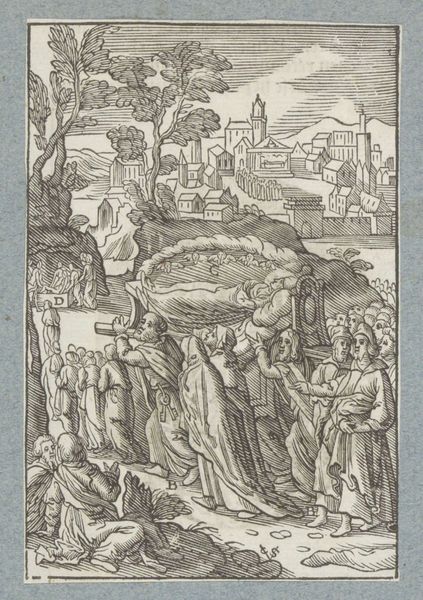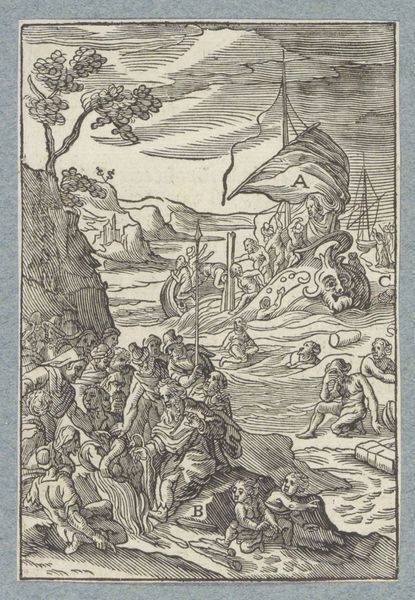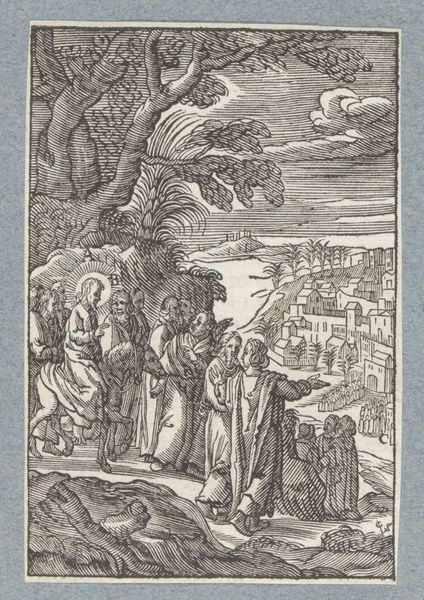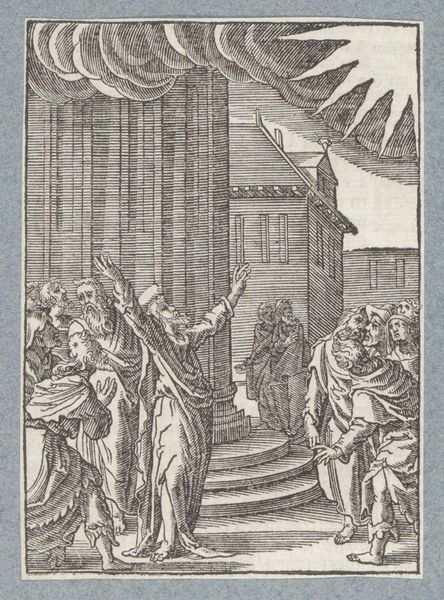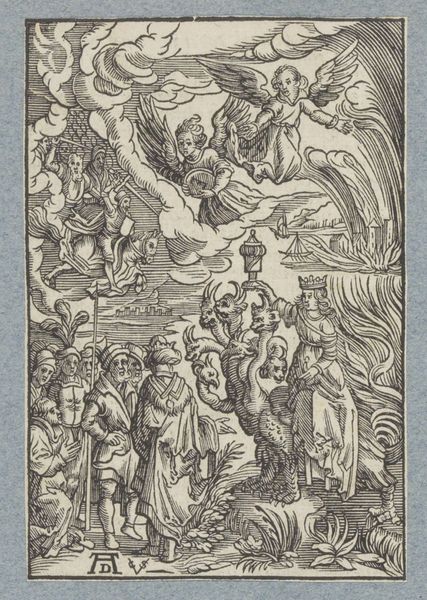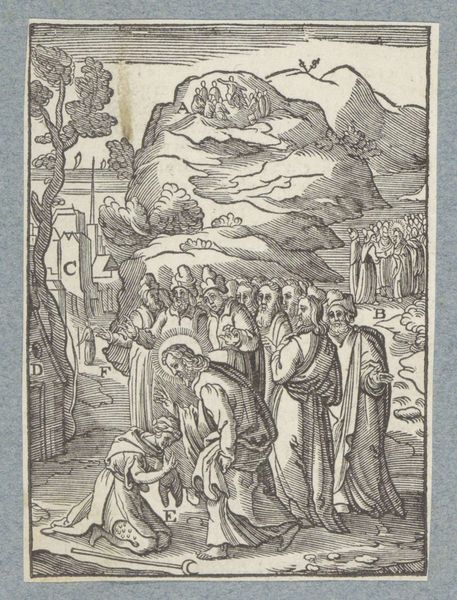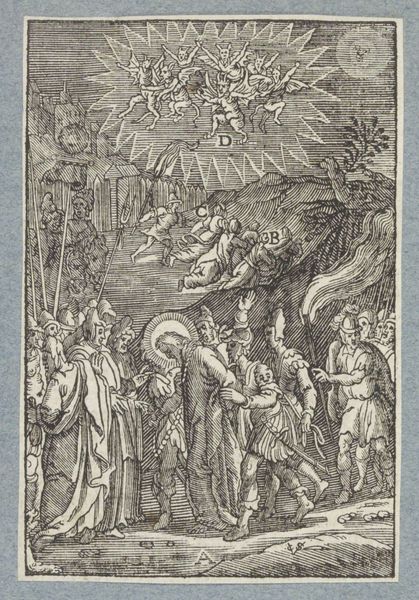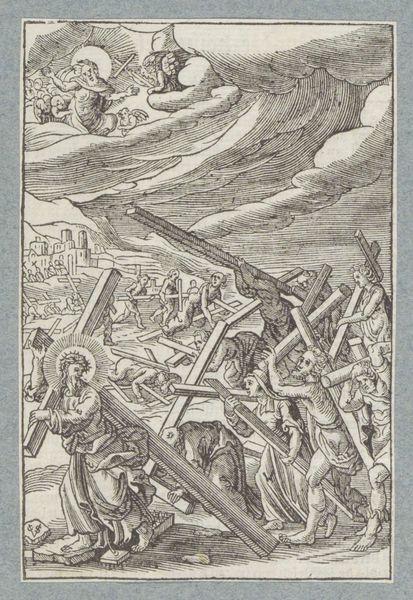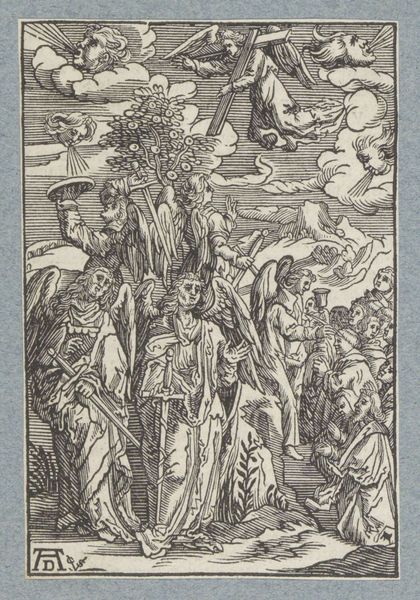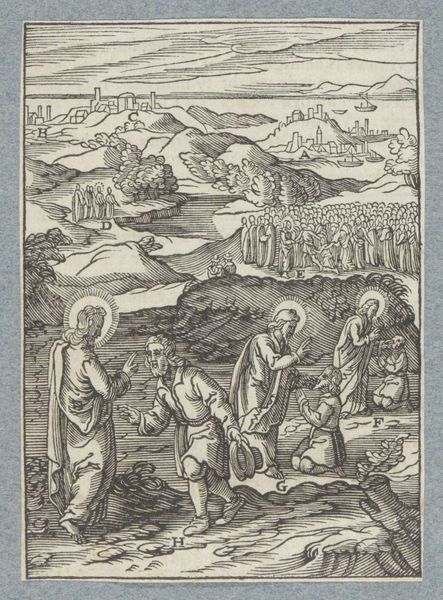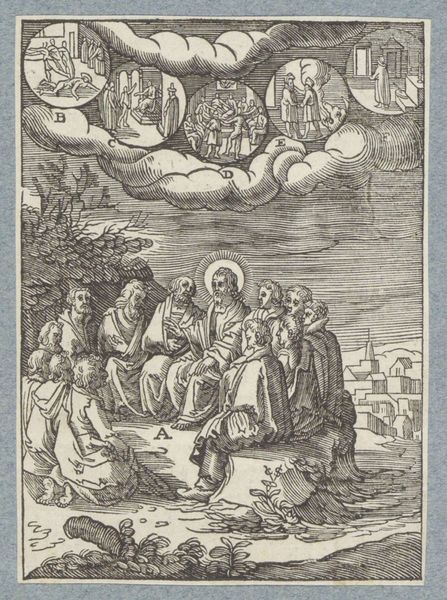
print, etching, engraving
#
medieval
#
allegory
# print
#
etching
#
landscape
#
figuration
#
line
#
pen work
#
history-painting
#
engraving
Dimensions: height 112 mm, width 74 mm
Copyright: Rijks Museum: Open Domain
Curator: This is a print entitled "Breng ons niet in beproeving," which translates to "Lead Us Not Into Temptation." Created by Christoffel van Sichem II sometime before 1646, it resides here at the Rijksmuseum. The medium is engraving, etching, and printmaking. Editor: It's a strikingly graphic composition, almost severe in its contrasting light and shadow. The sheer number of figures layered within feels very unsettling to me. Curator: The emotional complexity makes sense, considering it’s a visual interpretation of that pivotal line from the Lord’s Prayer. The scene above shows divine figures in the heavens, positioned above a landscape populated with people succumbing to earthly temptations. The sun itself feels distorted. Editor: I see that duality mirrored in the composition itself: the sharp, linear style of the landscape contrasts strongly with the more organic, cloud-like shapes enveloping the divine realm above. This artist masterfully divides up the image area to communicate conflicting realms, each vying for dominance. Curator: Note the specific temptations depicted – wealth, pleasure, earthly power - common metaphors but charged with meaning within the context of Christian iconography. The act of succumbing represented a societal anxiety, and a moral commentary of the period. Editor: The artist even varied line thickness to define depth. This draws the eye from the foreground figures with their dynamic lines, to the subtle detail in the cityscape fading into the horizon. What appears at first to be an overly-simplistic image actually shows thoughtful formal construction. Curator: These aren't mere aesthetic choices but culturally laden with meanings understood by its intended viewers. The positioning of God above implies an aspirational desire toward Heaven, while being tugged downward to fulfill earthly desires. Even the specific way in which a vice is symbolized – its costume or accompanying item – adds further nuance to the narrative. Editor: Seeing how those technical and material properties so cleverly serve to illustrate this complex allegory makes the image all the more affecting for me. It shows just how essential such elements are in conveying symbolic messaging. Curator: For me, seeing how it encapsulates a cultural snapshot of moral struggle in its moment. It still echoes, though differently, today.
Comments
No comments
Be the first to comment and join the conversation on the ultimate creative platform.
